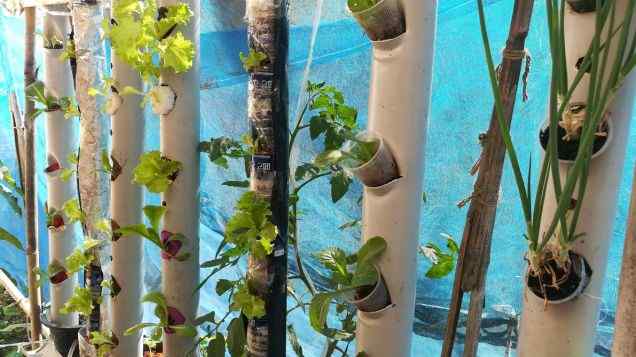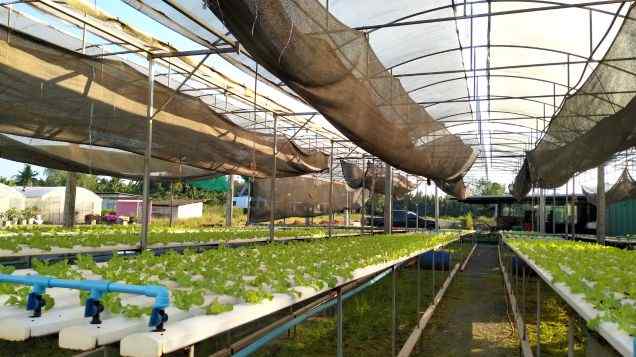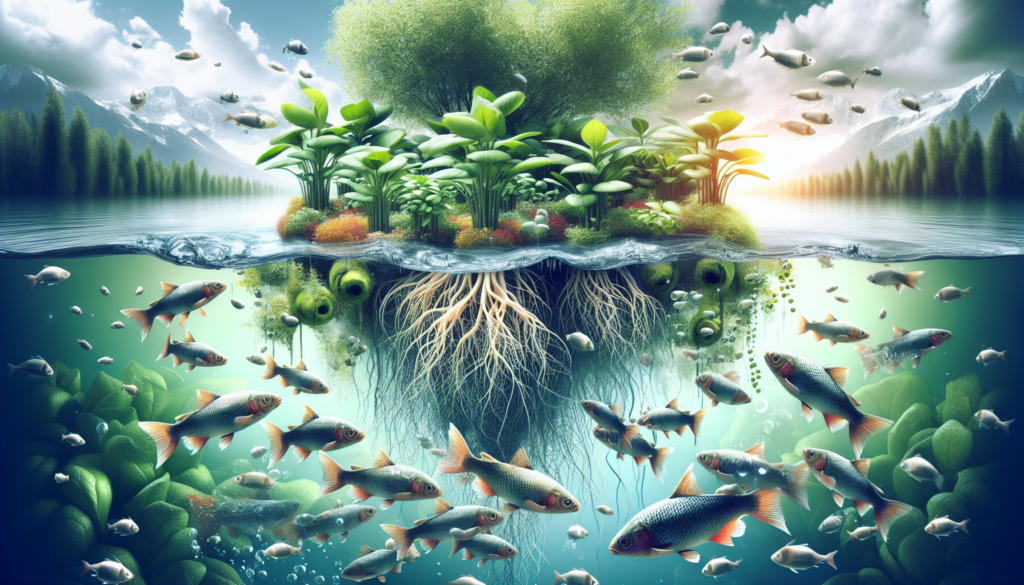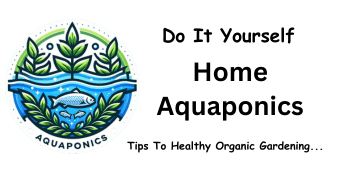Aquaponics, a unique and sustainable method of growing plants and raising fish together in a symbiotic environment, offers various methods and versions that cater to different needs. With the deep water culture system, plants are set afloat, their roots submerged in nutrient-rich water, while the media-based and NFT systems use gravel or a medium to support plant growth. For those looking to maximize space, the vertical system allows plants to grow vertically on stacked trays. Indulge yourself in the fascinating world of aquaponics as we explore the different methods and versions that make this innovative technique so revolutionary.
Deep Water Culture (DWC) System
Introduction to Deep Water Culture (DWC)
Deep Water Culture (DWC) is a type of hydroponic system in which the plants are suspended in nutrient-rich water. In this system, the roots of the plants are submerged in the water, allowing them to directly access the nutrients they need for growth. This method of cultivation has gained popularity due to its simplicity and effectiveness in supporting healthy plant growth.
Components of a DWC System
A typical DWC system consists of a water reservoir, an air pump, an air stone, a growing tray, and a nutrient solution. The water reservoir holds the nutrient solution, which is oxygenated by the air pump and air stone. The growing tray, usually made of plastic, contains the plants and allows their roots to access the nutrient-rich water. The air pump and air stone ensure that there is enough oxygen available for the plants’ roots to thrive.
Advantages of a DWC System
One of the main advantages of a DWC system is its simplicity. It is relatively easy to set up and maintain, making it a great option for beginners in hydroponics. Additionally, the direct access to oxygen and nutrients enables rapid plant growth and high yields. DWC systems also tend to be more affordable compared to other hydroponic systems, as they require fewer components and materials.
Disadvantages of a DWC System
While DWC systems have numerous benefits, they also have some drawbacks to consider. The reliance on water pumps and air stones for oxygenation means that power outages or equipment failures can pose risks to the plants. Another potential issue is the accumulation of algae in the nutrient solution, which can affect the overall health of the plants. Lastly, DWC systems require regular monitoring and adjustment of nutrient levels to ensure optimal plant growth.
Examples of DWC Systems
Some popular examples of DWC systems include the Bubbleponics system and the Kratky method. The Bubbleponics system utilizes air pumps and air stones to provide oxygenation to the plants’ roots, while the Kratky method relies on a static solution that gradually decreases as the plants consume the nutrients. Both methods have been proven effective and are widely used in hydroponic gardening.
Media-based Systems
Introduction to Media-based Systems
media-based systems in aquaponics involve the use of inert materials, such as clay pebbles, gravel, or coconut coir, to support plant growth. These materials, known as “media,” serve as a medium for the plants to anchor their roots and provide stability. Media-based systems are a popular choice for many aquaponic enthusiasts due to their versatility and ability to support a wide range of plant species.
Types of Media used in Media-based Systems
There are various types of media that can be used in media-based systems. One commonly used media is expanded clay pebbles, which are lightweight, have excellent drainage properties, and provide sufficient oxygenation to the roots. Another option is gravel, which is readily available and affordable. Coconut coir, made from coconut husks, is also a popular choice as it retains moisture well and promotes good aeration.
Components of a Media-based System
A media-based system consists of a grow bed, which serves as the container for the media and the plants. It is usually placed above the fish tank in an aquaponics setup. The grow bed is filled with the chosen media, and the plants are planted directly into it. The media acts as a filter for the fish waste, allowing the plants to access the nutrients while simultaneously purifying the water for the fish.
Advantages of a Media-based System
Media-based systems offer several advantages over other aquaponic systems. The media serves as a biological filter, providing surface area for beneficial bacteria to colonize and break down harmful substances in the fish waste. This helps maintain water quality and creates a more stable environment for both the fish and the plants. Media-based systems also provide excellent support for plant growth and root development.
Disadvantages of a Media-based System
One potential disadvantage of media-based systems is the occasional need for media maintenance. Over time, the media can become compacted or develop a biofilm, requiring rinsing or replacement. Additionally, media-based systems can be more labor-intensive when it comes to planting and transplanting, as care must be taken not to disrupt the delicate root systems of the plants.
Examples of Media-based Systems
A popular example of a media-based system is the flood and drain system, also known as ebb and flow. This system periodically floods the grow bed with nutrient-rich water from the fish tank and then drains it back down, providing the plants with the necessary nutrients and allowing the roots to access oxygen. Another example is the constant flow system, in which water continuously flows through the grow bed, providing a steady supply of nutrient-rich water to the plants.

Nutrient Film Technique (NFT) Systems
Introduction to NFT Systems
Nutrient Film Technique (NFT) is a hydroponic system that involves a thin film of nutrient-rich water continuously flowing over the roots of the plants. In this system, the plants are typically supported by troughs or channels, allowing the roots to be constantly exposed to a thin layer of the nutrient solution. NFT systems are known for their efficiency and water-saving capabilities.
Components of an NFT System
An NFT system consists of a tilted or sloping growing channel or trough, a nutrient reservoir, a pump, and a supply line. The nutrient reservoir holds the nutrient solution, which is pumped up to the top of the growing channel or trough. The solution then flows down the channel, creating a thin film that bathes the roots of the plants. Excess solution is collected and recirculated back to the reservoir.
Advantages of an NFT System
One of the main advantages of NFT systems is their water-saving nature. The thin film of nutrient solution ensures maximum oxygenation for the roots while minimizing water consumption. NFT systems are also highly efficient in nutrient delivery, allowing the plants to absorb the required nutrients quickly and effectively. Additionally, NFT systems are well-suited for growing leafy greens and other shallow-rooted crops.
Disadvantages of an NFT System
NFT systems have a few potential disadvantages to consider. These systems require regular monitoring and adjustment of the nutrient solution flow to ensure that the roots receive a sufficient supply of nutrients without becoming waterlogged. The reliance on continuous flow also makes NFT systems more susceptible to power outages or equipment failures. Another consideration is that NFT systems may not be suitable for larger, heavier plants with extensive root systems.
Examples of NFT Systems
A well-known example of an NFT system is the A-Frame system, which consists of sloping channels arranged in the shape of an “A.” This design allows for efficient nutrient flow and maximizes space utilization. Another example is the cascading NFT system, where multiple levels of growing channels are stacked vertically, optimizing vertical space and increasing the potential for high plant yields.
Vertical Systems
Introduction to Vertical Systems
Vertical systems in aquaponics involve the cultivation of plants on vertical surfaces, such as walls or towers. These systems maximize space utilization and offer the possibility of growing a large number of plants in a small footprint. Vertical systems have gained popularity in urban environments where space is limited, making them an ideal option for rooftop gardens or balconies.
Types of Vertical Systems
There are several types of vertical systems used in aquaponics. Tower systems, such as the stacked pots system, utilize a series of planters or pots stacked vertically, with water flowing from the top to the bottom. Wall-mounted systems, as the name suggests, involve attaching planters to a wall or other vertical surface. Another type is the vertical garden system, which consists of a framework that supports numerous pockets or containers for plants.
Components of a Vertical System
A vertical system typically includes a framework or structure to support the plants, planters or containers, and a water supply system. The water supply system can vary depending on the specific design and needs of the vertical system. It may involve the use of a recirculating pump and pipes or a gravity-fed system, where water flows through the planters by force of gravity.
Advantages of a Vertical System
Vertical systems offer several advantages in aquaponics. Firstly, they make efficient use of space, allowing for a larger number of plants to be grown in a compact area. This is especially beneficial in urban environments where space is limited. Vertical systems also provide easier access to plants, making maintenance and harvesting more convenient. Additionally, vertical systems can create visually appealing green walls or living art installations.
Disadvantages of a Vertical System
One potential disadvantage of vertical systems is the need for proper water distribution throughout the system. If water distribution is uneven or inadequate, certain plants may not receive enough nutrients or water, leading to stunted growth or poor yields. The vertical structure may also require additional support to ensure stability, especially when large plants or heavy fruiting crops are grown.
Examples of Vertical Systems
The Pocket System is one example of a vertical system that utilizes pockets or trays attached to a wall or framework. Each pocket can accommodate a single plant, allowing for a high number of plants in a small space. Another example is the ZipGrow Tower System, which utilizes a vertical tower design with planting pockets to grow a variety of crops. These systems have been successfully implemented in both commercial and residential settings.

Raft Systems
Introduction to Raft Systems
Raft systems, also known as floating raft or deep flow technique (DFT) systems, are commonly used in aquaponics for growing leafy greens and other shallow-rooted plants. In this system, the plants’ roots are submerged in a shallow pool of nutrient-rich water, supported by floating rafts made of foam boards or other buoyant materials. Raft systems are known for their simplicity and high yields.
Components of a Raft System
A raft system consists of a fish tank, a biofilter, an aeration system, and the floating rafts. The fish tank houses the fish and provides the nutrient-rich water, which is continuously circulated through the system. The biofilter helps break down the fish waste and maintain water quality. The aeration system ensures sufficient oxygenation for both the fish and the plants. The floating rafts hold the plants and allow their roots to access the water and absorb nutrients.
Advantages of a Raft System
One of the key advantages of a raft system is its simplicity. It requires minimal equipment and setup, making it suitable for beginners in aquaponics. Raft systems are well-suited for growing leafy greens and herbs, which have shallow root systems. The floating rafts provide stability for the plants and prevent damage from soil-borne pests. Raft systems also offer continuous nutrient availability to the plants, resulting in rapid growth and high yields.
Disadvantages of a Raft System
Raft systems have a few potential drawbacks. The reliance on an aeration system to ensure oxygenation can pose a risk if there is a power outage or equipment failure. Additionally, the design of a raft system may limit the types of crops that can be grown, as it is primarily suitable for plants with shallow root systems. Another consideration is the need for regular cleaning and maintenance of the floating rafts to prevent the buildup of algae or debris.
Examples of Raft Systems
The Deep Flow Technique (DFT) is a popular example of a raft system. It involves using floating foam rafts with pre-cut holes to hold net pots, which house the plants. The rafts are placed in a shallow pool of nutrient-rich water, allowing the plants to access the necessary nutrients. Another example is the Styrofoam Raft System, which utilizes Styrofoam sheets as the floating rafts, enabling the cultivation of a variety of plants.
Aeroponic Systems
Introduction to Aeroponic Systems
Aeroponic systems are a type of soilless cultivation method in which plants are grown with their roots suspended in air. The plants receive a fine mist or fog of nutrient-rich water, providing an optimal balance of oxygen and nutrients. This highly efficient system encourages rapid plant growth and is particularly suitable for growing plants that have high water requirements or delicate roots.
Components of an Aeroponic System
An aeroponic system consists of a reservoir for holding the nutrient solution, a pump to deliver the solution, spray nozzles or misters to create the fine mist, and a support structure for the plants. The roots of the plants are often contained in net pots or mesh cups to allow for easy access to the nutrient mist. The system may also include a timer or control system to regulate the frequency and duration of the nutrient mist cycles.
Advantages of an Aeroponic System
Aeroponic systems offer several advantages in hydroponics. The fine mist or fog of nutrient solution provides optimal oxygenation to the roots, promoting faster growth and higher yields. The absence of soil reduces the risk of soil-borne diseases and pests, resulting in healthier plants. Aeroponic systems also use water efficiently, as the mist can be recirculated, minimizing water waste.
Disadvantages of an Aeroponic System
One potential disadvantage of aeroponic systems is their reliance on complex equipment and precise environmental control. The misters or spray nozzles can become clogged, requiring regular cleaning and maintenance. Additionally, power outages or equipment failures can quickly impact the plants’ health in aeroponic systems. Maintaining a stable nutrient solution pH and nutrient levels is also crucial for optimal plant growth in this system.
Examples of Aeroponic Systems
One example of an aeroponic system is the Tower Garden, which utilizes vertical towers with pockets for plants. The nutrient solution is delivered through misters, providing each plant with the necessary oxygen and nutrients. Another example is the Fogponics system, where the nutrient solution is turned into a fine fog that surrounds the roots of the plants. These systems are popular in both commercial and residential settings, as they allow for high-density vertical cultivation.

Hybrid Systems
Introduction to Hybrid Systems
Hybrid systems in aquaponics combine the principles of multiple hydroponic systems to create a synergistic growing environment. By incorporating different techniques, hybrid systems can maximize plant growth and overall system efficiency. These systems often aim to combine the benefits of various cultivation methods while minimizing their drawbacks.
Types of Hybrid Systems
There are numerous types of hybrid systems in aquaponics that combine different cultivation techniques. One example is the Hybrid NFT/DWC system, which utilizes both the nutrient film technique (NFT) and deep water culture (DWC) principles. In this system, plants are suspended in nutrient-rich water in DWC troughs, while a continuous thin film of nutrient solution flows over the plant roots in NFT channels. Other hybrid systems may incorporate media-based beds, vertical structures, or other combinations.
Components of a Hybrid System
The components of a hybrid system vary depending on the specific combination of growing techniques. A hybrid NFT/DWC system may consist of separate DWC troughs and NFT channels, each with their respective components. In other hybrid systems, there may be a combination of grow beds filled with media, vertical towers, or other innovative designs. The key is to create a diverse and complementary environment that optimizes plant growth and nutrient delivery.
Advantages of a Hybrid System
The main advantage of a hybrid system is the ability to leverage the strengths of different cultivation methods. By combining techniques such as DWC, NFT, media-based beds, or vertical structures, hybrid systems can maximize space utilization, increase plant diversity, and enhance nutrient absorption. The synergy between different components allows for higher yields and improved overall system efficiency.
Disadvantages of a Hybrid System
One potential disadvantage of hybrid systems is the complexity involved in their design and setup. The integration of multiple techniques may require more equipment, materials, and maintenance compared to single-system approaches. Additionally, adjustments and monitoring may be needed to maintain optimal conditions for each component of the hybrid system. The learning curve for operating and fine-tuning hybrid systems may also be steeper compared to simpler hydroponic or aquaponic setups.
Examples of Hybrid Systems
One example of a hybrid system is the Hybrid Vertical Raft System, which combines the floating raft technique with vertical towers. This system utilizes floating rafts for the initial growth stage, and as the plants mature, they are transferred to vertical towers for continued growth. This combination maximizes space utilization while providing ample oxygen and nutrient availability. Other examples of hybrid systems include combinations of NFT and media-based beds or media-based beds with vertical structures like towers or walls.
Simplified Aquaponics Systems
Introduction to Simplified Aquaponics Systems
Simplified aquaponics systems are designed to be user-friendly and accessible for beginners or those with limited space and resources. These systems often aim to simplify the setup and maintenance process while still providing a symbiotic environment for fish and plants to thrive. Simplified aquaponics systems can be a great entry point for individuals interested in exploring aquaponics on a smaller scale.
Components of a Simplified Aquaponics System
A simplified aquaponics system typically consists of a fish tank, a grow bed, a water pump, a biofilter, and a water distribution system. The fish tank and grow bed can be any appropriate containers such as plastic tubs or barrels. The water pump circulates the water from the fish tank to the grow bed, allowing the plants to filter the water through their root systems. The biofilter helps convert fish waste into plant-available nutrients.
Advantages of a Simplified Aquaponics System
One of the main advantages of a simplified aquaponics system is its ease of setup and maintenance. These systems can be assembled with readily available materials and do not require complex equipment or specialized knowledge. Simplified aquaponics systems can also be tailored to suit the available space, making them suitable for small gardens or even indoor setups. The symbiotic relationship between the fish and plants provides a natural, low-input method of cultivation.
Disadvantages of a Simplified Aquaponics System
While simplified aquaponics systems offer accessibility and simplicity, they may have limitations in terms of scale and crop selection. These systems are generally more suitable for smaller-scale operations and may not be able to support larger or heavier fruiting plants. Close monitoring and adjustment of water quality and nutrient levels are necessary to ensure the success of the system. Additionally, simplified systems may require more frequent cleaning and maintenance compared to larger, more complex aquaponics setups.
Examples of Simplified Aquaponics Systems
A popular example of a simplified aquaponics system is the Barrelponics system. This system utilizes repurposed barrels as the fish tank and grow bed, making it affordable and accessible. Another example is the Windowponics system, which is designed for indoor use and utilizes a window as the light source for the plants. These simplified systems have gained popularity due to their practicality and adaptability to different settings.

Reciprocating Systems
Introduction to Reciprocating Systems
Reciprocating systems, also known as flood and drain systems, are a type of hydroponic or aquaponic system that periodically floods and drains the grow bed or container. In these systems, the nutrient-rich water is pumped into the grow bed, and once a cycle is complete, it is drained back into the reservoir. This alternating flood and drain action ensures that the plants’ roots have access to both oxygen and nutrients, promoting healthy growth.
Components of a Reciprocating System
A reciprocating system typically consists of a grow bed, a water reservoir, a pump, and a timer or control system. The grow bed can be filled with a suitable growing medium, such as expanded clay pebbles or gravel. The water reservoir holds the nutrient solution, which is periodically pumped into the grow bed using the pump. The timer or control system regulates the flood and drain cycles, ensuring optimal conditions for the plants.
Advantages of a Reciprocating System
Reciprocating systems offer several advantages in hydroponics and aquaponics. The alternating flood and drain cycles provide oxygenation to the roots, preventing waterlogging and promoting nutrient uptake. These systems also allow for better control over water and nutrient levels, as excess water drains away, avoiding the risk of overwatering. Reciprocating systems are well-suited for a variety of plants and can be customized to fit different container sizes and setups.
Disadvantages of a Reciprocating System
One drawback of reciprocating systems is the need for careful monitoring and adjustment of the flood and drain cycles. Uneven or irregular flooding and draining may impact the health and growth of the plants. Additionally, the pump in the system requires regular maintenance to prevent clogging and ensure consistent operation. Reciprocating systems may also be more complex to set up compared to simpler hydroponic or aquaponic systems.
Examples of Reciprocating Systems
One popular example of a reciprocating system is the Media Bed Flood and Drain System, which utilizes media-filled grow beds. The nutrient solution is periodically pumped into the grow beds and then drains back into the reservoir. The AquaValve System is another example, featuring an automated valve that controls the flooding and draining cycles in the grow beds. These reciprocating systems have proven effective in supporting healthy plant growth and are widely used in hydroponic and aquaponic setups.
Symbiotic Systems
Introduction to Symbiotic Systems
Symbiotic systems in aquaponics employ a combination of cultivating fish and plant species that have a mutually beneficial relationship. These systems harness the waste produced by the fish as a nutrient source for the plants, while the plants help filter and purify the water for the fish. Symbiotic systems represent a holistic approach to aquaponics, creating a balanced ecosystem where both the fish and plants thrive.
Components of a Symbiotic System
A symbiotic system consists of a fish tank, a grow bed or media-based system, water pumps, and a biofilter. The fish tank houses the fish, providing a nutrient-rich environment. The grow bed or media-based system supports the plants and allows their roots to access the water and nutrients. Water pumps circulate the water from the fish tank to the grow bed, while the biofilter helps break down fish waste and maintain water quality.
Advantages of a Symbiotic System
Symbiotic systems offer numerous advantages in aquaponics. The symbiotic relationship between the fish and the plants creates a self-sustaining ecosystem, reducing the need for external fertilizers or additives. The plants help filter and purify the water, improving its quality for the fish. Symbiotic systems can also provide a diverse range of food sources, with the potential for both fish and plant harvests.
Disadvantages of a Symbiotic System
One potential disadvantage of symbiotic systems is the need for careful monitoring and balance to maintain an optimal environment. Water quality parameters, such as pH, ammonia, and nitrate levels, must be regularly checked and adjusted to ensure the health of both the fish and the plants. Symbiotic systems also require a good understanding of the specific requirements of the fish and plants involved, as different species may have different needs.
Examples of Symbiotic Systems
A classic example of a symbiotic system is one that combines tilapia fish with a variety of vegetable crops, such as lettuce or herbs. The waste produced by the tilapia provides essential nutrients for the plants, while the plants help purify the water for the fish. Another example is the use of ornamental fish, such as koi, in combination with aquatic plants like watercress or water hyacinth. These symbiotic systems can be tailored to suit various fish and plant species, depending on regional preferences and availability.
